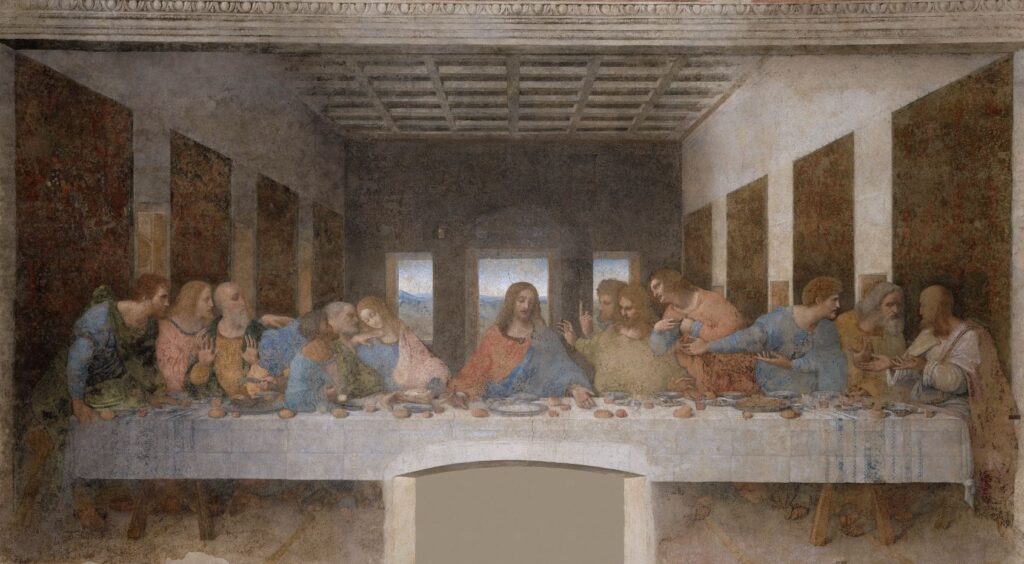Introduction
The time of Renaissance was a cultural, political, economic, and artistic rebirth period across Europe between the 14th and 17th centuries. During this period, art positively influenced the development of several scientific fields, such as medicine, human anatomy, and mathematics. Many artists of that time, such as Leonardo da Vinci, showed the presence of illnesses through their paintings. Human anatomy progressed as artists emphasized its importance by showing human structures in paintings, such as the Smith Papyrus and stippled red paintings on walls. Art positively influenced the progress of the Renaissance period by incorporating human anatomy, medicine, and mathematics in existing paintings.
Art and Human Anatomy
Art significantly influenced the study of human anatomy in the Renaissance period. For example, the earliest known paintings, such as the stippled red painting on the wall of Cantabria and the Smith Papyrus, recorded rational human observations in natural science (Sealy & Lee 2020, p. 571). Artists observed such internal anatomy in processes, including gaping wounds and mummification, because the deliberate opening of human bodies violated existing human values and was considered taboo. Therefore, art had caused a huge impact on the development of human anatomy during the Renaissance period, and people observed human structures only through vicarious observations.

Art and Medicine
The artistic lens provided new insights into medicine during the Renaissance period. For example, Leonardo da Vinci’s “The Last Supper” captured the diseases and deformities prevalent during that time, depicting that one of the diners had arthritis (Vijayan et al. 2022, p. 572). Apart from depicting the presence of various diseases, other painters also provided a bird’s view of the natural history, showing the classical deformities of the rheumatoid hand in the painting. As such, artists of this period allowed for the progress of medicine by showing the natural histories and symptoms of existing diseases, such as arthritis illness and rheumatoid.
Art and Mathematics
Art was improved through mathematics and logic during the Renaissance period. For example, the sketches of Leonardo of Pisa puzzled idealized rabbit populations through a large sequence of Fibonacci numbers, which are currently used in music composition and photography (Zhu & Ghoyal 2019, p. 1). Most paintings reflected the beauty of nature in buildings, animals, and plants through the interplay of mathematics and art, which predicted linear and arithmetic components. Hence, artists of the Renaissance period incorporated logic in their paintings of buildings and nature, which helped to establish the progress of mathematics.
Conclusion
Art significantly influenced the development of human anatomy, medicine, and mathematics when people started to use new techniques and ideas for their paintings during the Renaissance period. Renaissance paintings, such as the Smith of Papyrus and the stippled red paintings on the wall of Cantabria, were based on observations of human anatomy and played a huge role in the subject’s development. Art also influenced medicine development through paintings that captured existing diseases. In this case, Leonardo da Vinci’s “The Last Supper” shows that one of the diners at the table has symptoms of arthritis. Besides, various artists, such as Leonardo of Pisa, used sketches of sequences of numbers to predict rabbit populations in particular fields. Therefore, art greatly influenced the development of different fields of human activities during the Renaissance period.
Reference List
Sealy, U & Lee, T 2020, ‘Anatomy and academies of art I: Founding academies of art’, Journal of Anatomy, vol. 236, no. 4, pp. 571-576, viewed 17 July 2023, DOI:10.1111/joa.13131.
Vijayan, S., Bansal, K., Goel, A., Ouardouz, S., Nune, A & Gupta, L 2022, ‘The continuum of art and rheumatology: A discernment of mutual inclusivity’, Rheumatology International, vol. 42, no.4, pp. 571-579, viewed 17 July 2023, DOI:10.1007/s00296-022-05092-6.
Zhu, L & Ghoyal, Y 2019, ‘Art and science’, Embo Report, vol. 20, no. 2, pp. 1-6, viewed 17 July 2023, DOI:10.15252/embr.201847061.


